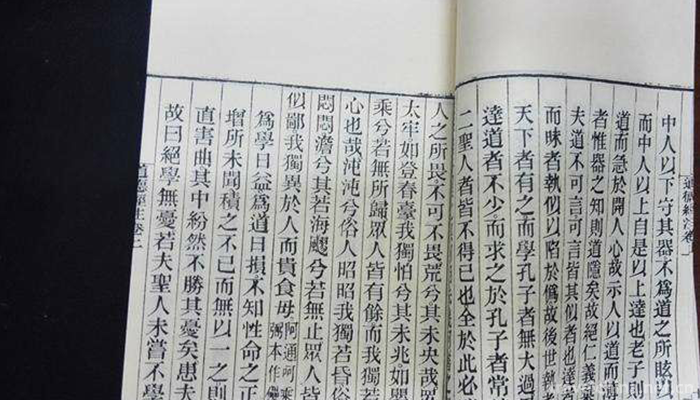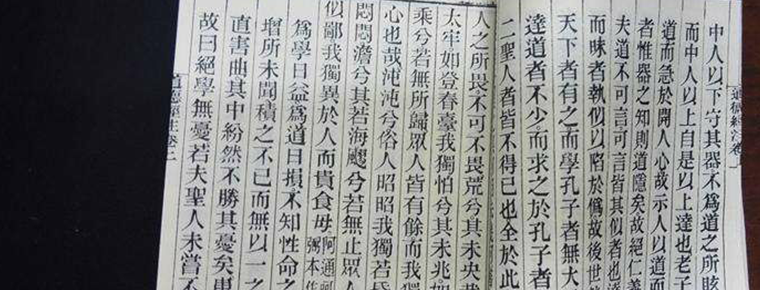Jinling Classic Carving and Printing Techniques
Jinling Classic Carving and Printing Techniques
Jinling classical engraving and printing technology, local traditional handicraft in Nanjing, Jiangsu Province, is one of the national intangible cultural heritage.
The printing technique of Jinling scriptures originated from Tang Dynasty. In 1866 (the fifth year of Tongzhi reign in Qing Dynasty), the founder of the revival of Buddhist culture in modern China, Yang Renshan, and other people of insight founded the Jinling Sutra Inscription Office to inherit the printing skills of Jinling Sutra Inscription. In the 1940s and 1950s, they survived the baptism of war. After the founding of New China, it has been inherited and protected and developed rapidly.
On May 20, 2006, Jinling engraving was approved by the State Council to be included in the first batch of national intangible cultural heritage list, project number: _-79.
historical origin
Since the Pre-Qin Dynasty, there has been a method of inscribing words and stones to print and circulate them. However, stone materials in the material transfer, carving modification, there are many inconveniences, then gradually replaced by wooden plate. So far, the art of block printing has become the mainstream of Chinese culture since Sui and Tang Dynasties. According to historical data, Chinese woodblock printing began in the 7th century AD and was used to print Buddhist scriptures. Master Xuanzang of the Tang Dynasty (600-664) used Huifeng Paper to print the image of the sage of the sages and to give it to the four people. The earliest existing block printing with chronology marks was the Diamond Sutra, which was created by Wang Pei for his parents in 868 A.D. at the London Museum in England.
From 1041 to 1048 AD, Bi Sheng (970-1051), the founder of movable type printing, one of the four great inventions in ancient China, summed up the experience of previous generations of block printing, and through repeated research and experiments, produced clay movable characters with cement as raw material. The invention of movable type printing is an epoch-making revolution in the history of printing and has made great contributions to the development of world civilization. Because of the easy breakage of clay-fired movable type, wood was used as raw material to carve movable type later. However, for various reasons, movable type printing has not been widely popularized in China, and books are still dominated by block printing.
In the mid-15th century, after the improved wooden movable type printing in Gutenberg, Germany, a chapter of modern Western printing was officially opened. At the beginning of the 19th century, western modern printing and printing ink were introduced into China at the same time. In 1843, British missionary Medus founded the Mohai Library in Shanghai, marking the formal entry of modern type printing into China. In the next few decades, Chinese traditional block printing declined sharply and was on the verge of extinction.
In 1866, the Four Classics of Pure Land, which was engraved by the dwellers of Yang Renshan, marked the founding of Jinling Classic Inscription Office and the beginning of the inheritance and use of Jinling Classic Inscription Printing Technology in Jinling Classic Inscription Office.
In 1980, the inscriptions were completely restored with a new look. In 1981, the circulation of Buddhist Scriptures was resumed, and the old engraving and printing (woodcut watermarking, line-mounted letter sets, etc.) techniques were also restored. Advanced modern printing equipment was added to meet the needs of Buddhist books donated by followers around the world. The woodcut Buddhist scriptures continued to be provided to Buddhists and intellectuals, so that the Jinling Buddhist scriptures were still published worldwide in Chinese woodcut Buddhist scriptures in the 21st century. The center is highly appreciated by Buddhist circles at home and abroad.
Process characteristics


-
1.RenminbiChinese yuan
The legal currency of the People's Republic of China is Renminbi. The People's Bank of China is the competent organ of the state in charge of the management
Time 2018-11-13 -
2.Five spring mountain
Wuquan Mountain is located at the northern foot of Gaolan Mountain, south of Lanzhou City. It is a famous Longshang resort with a history of more than 2,000 years
Time 2018-12-22 -
3.Harbin Jinyuan Cultural Tourist Area
Harbin Acheng Jinyuan Cultural Tourist Area, the capital of Jin Dynasty from 1115 to 1234, is the only well-preserved capital site of Jin Dynasty. Up to now, the Royal City's Wumen Gate and palace bui
Time 2019-01-13 -
4.Changying Century City
Changying Century City, located in Nanguan District, Changchun City, Jilin Province, was founded in 2003. It is a comprehensive tourist area integrating science and technology, adventure, performing a
Time 2019-03-17 -
5.Genghis Khan Festival
Genghis Khan's sacrifice is a Mongolian custom of offering sacrifices to Genghis Khan. It originated in the Wokuotai era, and was formally issued in the Kublai Khan era. It stipulated various sacrific
Time 2019-04-18 -
6.Dang Tu folk songs
Dangtu Folk Song is one of the national intangible cultural heritages of the local traditional music in Ma'anshan City, Anhui Province.
Time 2019-04-25 -
7.Xibo Folk Stories
Xibo folk tales, Xibo people are descendants of Xianbei people in ancient times. Xianbei was originally nomadic in the eastern foot of the Great Hinggan Mountains, and has been hunting and fishing for
Time 2019-07-01 -
8.Yazhou Folk Songs
Yazhou folk song is one of the ancient folk songs in Hainan Province. It is popular in the areas of Yazhou and Dongfangkangcheng, west of Sanya Yacheng and east coast of Ledong. Yazhou Guest (Han) dia
Time 2019-07-10 -
9.Huainan Normal University
The school was founded in 1958 when it was a teacher's College in Huainan. In 2000, approved by the Ministry of education, the former Huainan normal school, Huainan Education Institute and Huainan nor
Time 2019-11-16 -
10.Daci Temple
Daci Temple, also known as the ancient great saint CI temple, is located in the first section of Dongfeng Road, Jinjiang District, Chengdu City, Sichuan Province. It was built between the 3rd and 4th centuries AD, and is known as "the first jungle of the Sinian".
Time 2020-11-05 -
11.Neijiangs first industry
In 2019, the sown area of grain crops in Neijiang is 309600 ha, an increase of 0.3% over the previous year; the sown area of oil crops is 79900 ha, an increase of 0.4%; and the sown area of vegetables is 78100 ha, an increase of 2.3%. The total grain output
Time 2020-12-16 -
12.Neijiang traffic
Neijiang has convenient transportation, which is one of the main national highway transportation hubs planned by the Ministry of transport, the second largest transportation hub in Sichuan Province and an important intersection point of Southwest land
Time 2020-12-16